Rome, where history and modernity intertwine seamlessly, offers an unparalleled journey through time. Known as the Eternal City, Rome is a living museum boasting ancient ruins, Renaissance art, and vibrant street life. This guide will navigate you through Rome’s most iconic landmarks and hidden gems, ensuring a well-rounded experience of this timeless city. From the grandeur of the Colosseum to the charm of Trastevere’s narrow streets, get ready to explore the depths of Rome’s rich history and culture.
1. The Colosseum
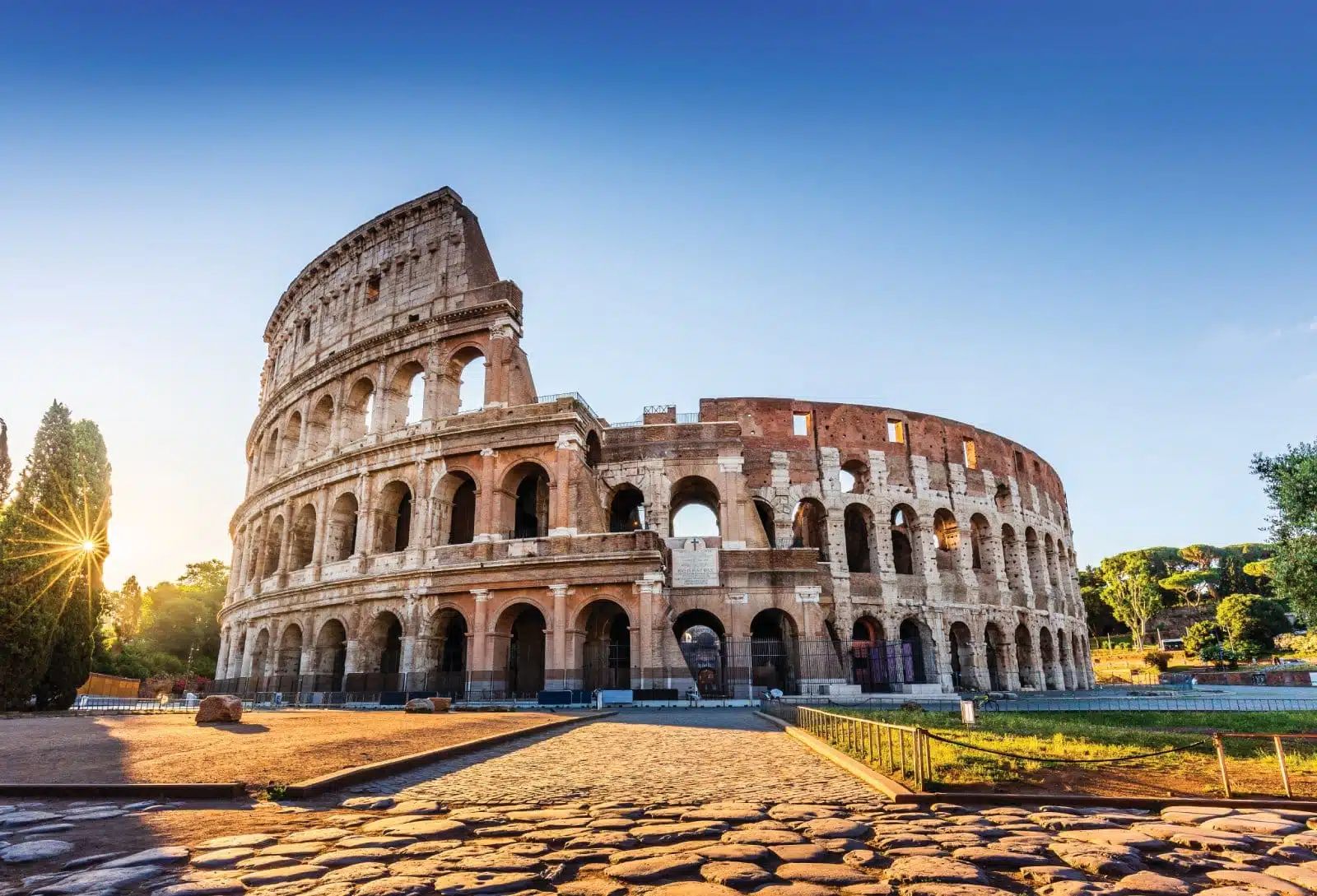
Image Credit: Shutterstock / SCStock
The Colosseum, an enduring symbol of ancient Roman engineering and architecture, is a must-visit. Once the arena for gladiator battles, it now stands as a monument to Rome’s imperial past. Exploring the Colosseum, you can almost hear the roaring crowds’ echoes and gladiator swords’ clashing. Its massive structure and complex history make it a fascinating site for history enthusiasts and casual visitors.
Insider’s Tip
Purchase a combined ticket with entry to the Roman Forum and Palatine Hill to make the most of your visit.
How To Get There
The Colosseum is conveniently accessible via the Colosseo metro station.
Best Time To Travel
Visit during the off-peak seasons, in early spring or late fall, to avoid the crowds and extreme heat.
2. Vatican City
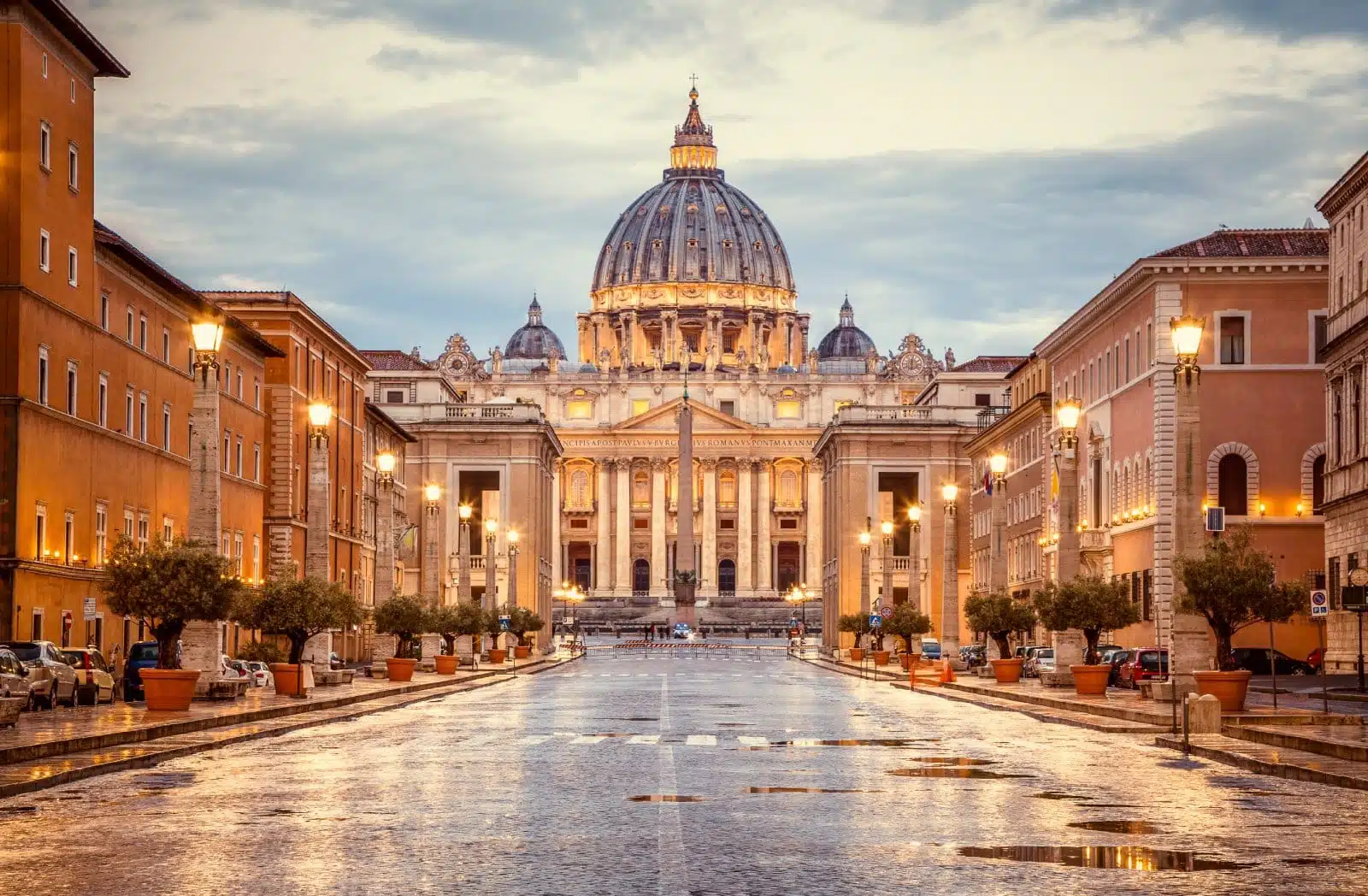
Image Credit: Shutterstock / Vlas Telino studio
Vatican City, the heart of the Catholic world, is a sovereign state within Rome. Home to the Pope, the Vatican is also a treasure trove of artistic and cultural riches. The Vatican Museums house a vast collection of art and historical pieces, including the Sistine Chapel with Michelangelo’s famous ceiling. St. Peter’s Basilica, with its impressive dome designed by Michelangelo, is an architectural masterpiece offering panoramic views of Rome from its summit.
Insider’s Tip
Reserve a guided tour for early morning to access the Sistine Chapel before it opens to the general public.
How To Get There
Reach Vatican City via the Ottaviano metro station, followed by a short walk.
Best Time To Travel
Visit during the winter months to avoid long lines and crowded spaces.
3. The Pantheon
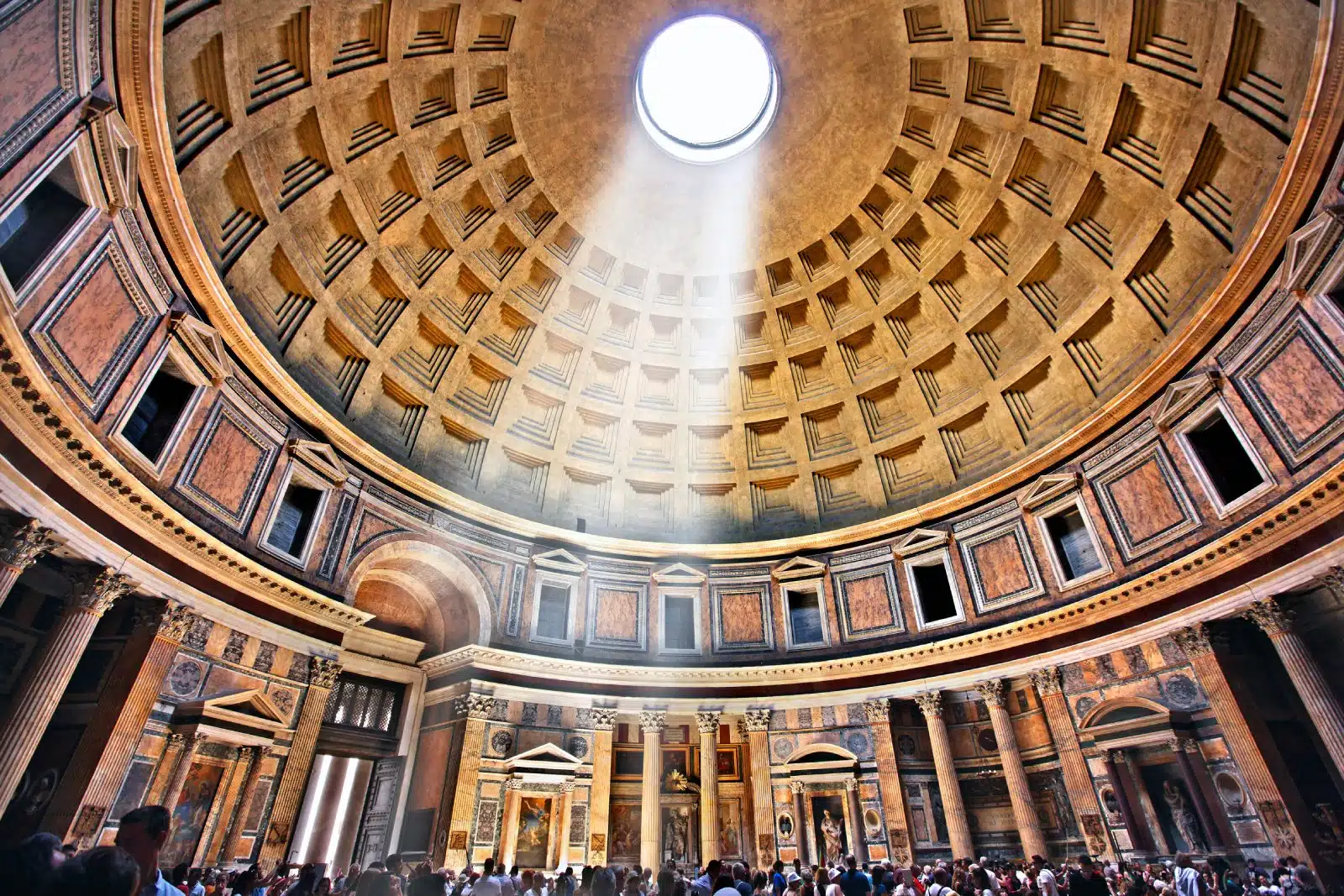
Image Credit: Shutterstock / Heracles Kritikos
The Pantheon, an impressive feat of ancient Roman architecture, is known for its perfectly proportioned dome, the largest unreinforced concrete dome in the world. Originally built as a temple to all gods, it now serves as a church and a tomb for notable figures, including the artist Raphael. The building’s harmonious proportions and the oculus, a circular opening at the dome’s apex, create a unique and awe-inspiring interior atmosphere.
Insider’s Tip
Visit on a rainy day to see the captivating sight of rain falling through the oculus and evaporating before it hits the ground.
How To Get There
The Pantheon is centrally located and best reached by foot from other nearby attractions like Piazza Navona.
Best Time To Travel
Early mornings or late afternoons are less crowded, offering a more serene experience.
4. Trevi Fountain
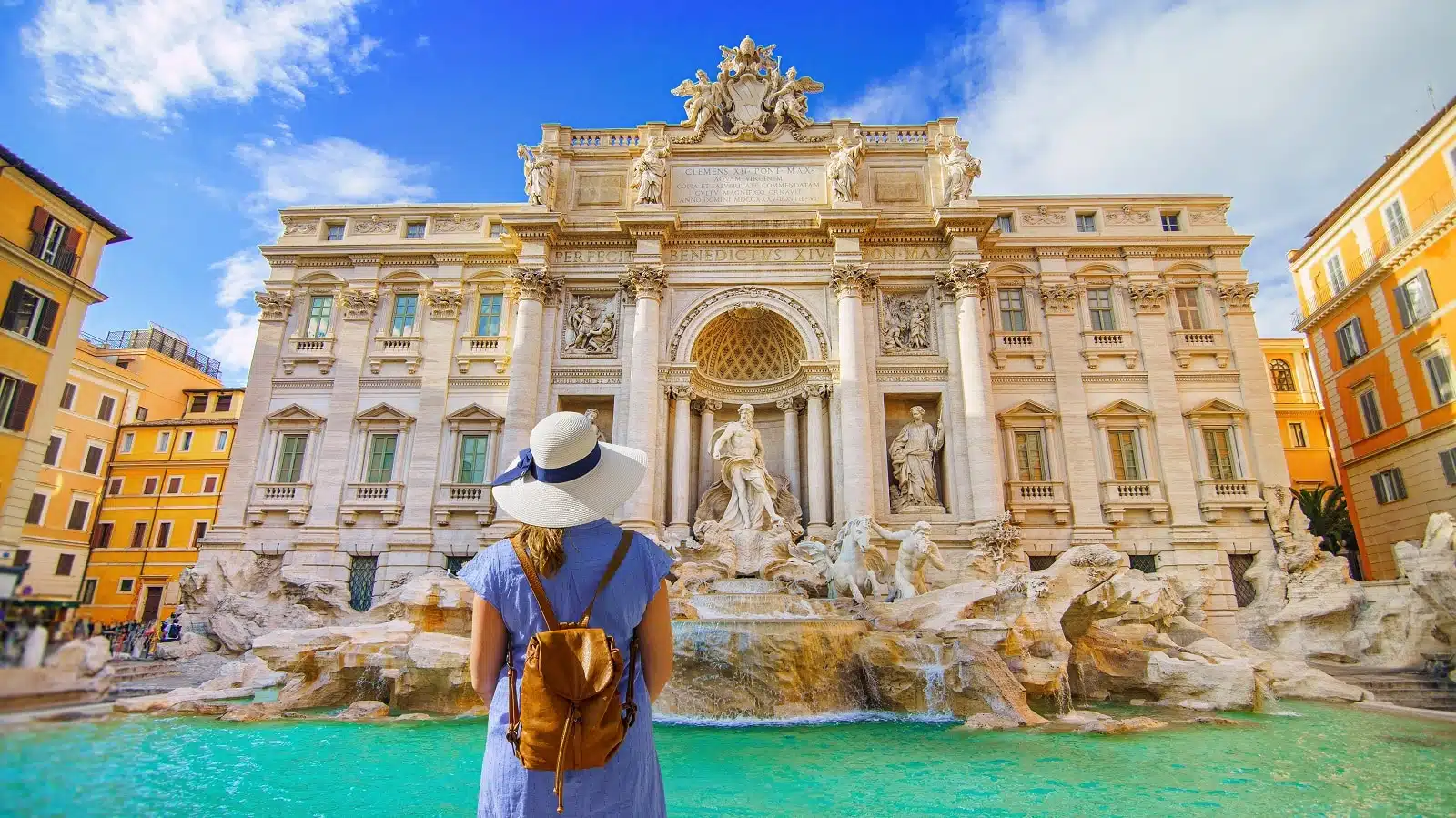
Image Credit: Shutterstock / Igor Link
The Trevi Fountain, an iconic baroque masterpiece, is not only a visual spectacle but also a testament to Rome’s historical relationship with water. The fountain, featuring the god Oceanus, stands at the end of the Aqua Virgo aqueduct and is one of the oldest water sources in Rome. According to legend, throwing a coin over your shoulder into the fountain ensures a return to Rome.
Insider’s Tip
Visit the fountain at night when it’s beautifully illuminated and less crowded.
How To Get There
The Trevi Fountain is within walking distance from the Barberini metro station.
Best Time To Travel
Early morning or late evening visits allow you to appreciate the fountain’s beauty without the crowds.
5. Roman Forum
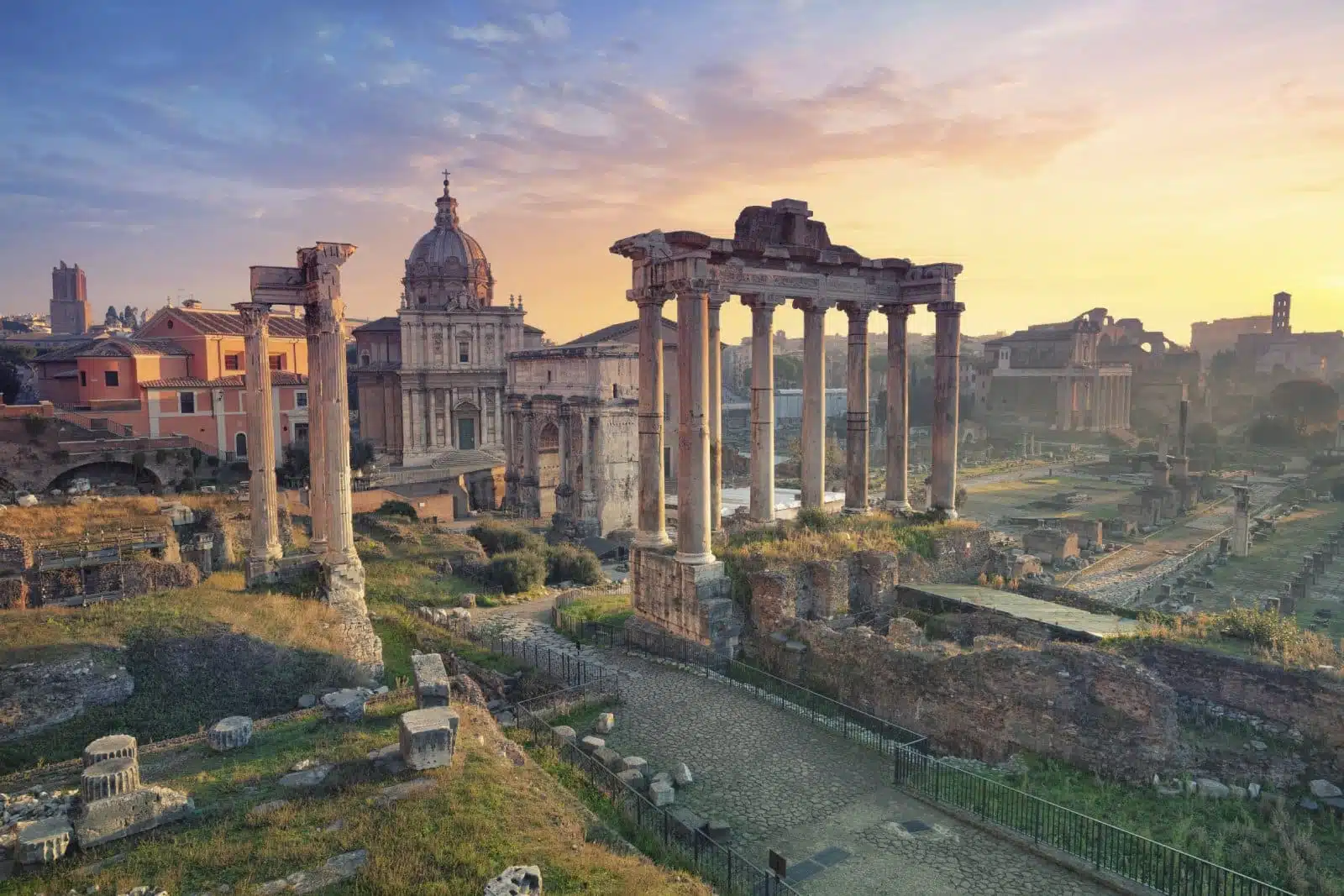
Image Credit: Shutterstock / Rudy Balasko
Once the center of public and political life in ancient Rome, the Roman Forum is a sprawling complex of ruins. Walking through
the Forum, you’re tracing the steps of Roman emperors and citizens amidst temples, arches, and government buildings that once defined the city’s daily life. The site offers a profound sense of history, as each ruin has its own story, contributing to the narrative of Rome’s glorious past. The Forum appeals to history buffs and anyone seeking to understand the depth of Rome’s historical significance.
Insider’s Tip
Climb the Palatine Hill for a panoramic view of the entire Forum area.
How To Get There
The Roman Forum is close to the Colosseum and can be accessed easily from the Colosseo metro station.
Best Time To Travel
Visit early in the morning to avoid the heat and crowds, especially in summer.
6. Trastevere
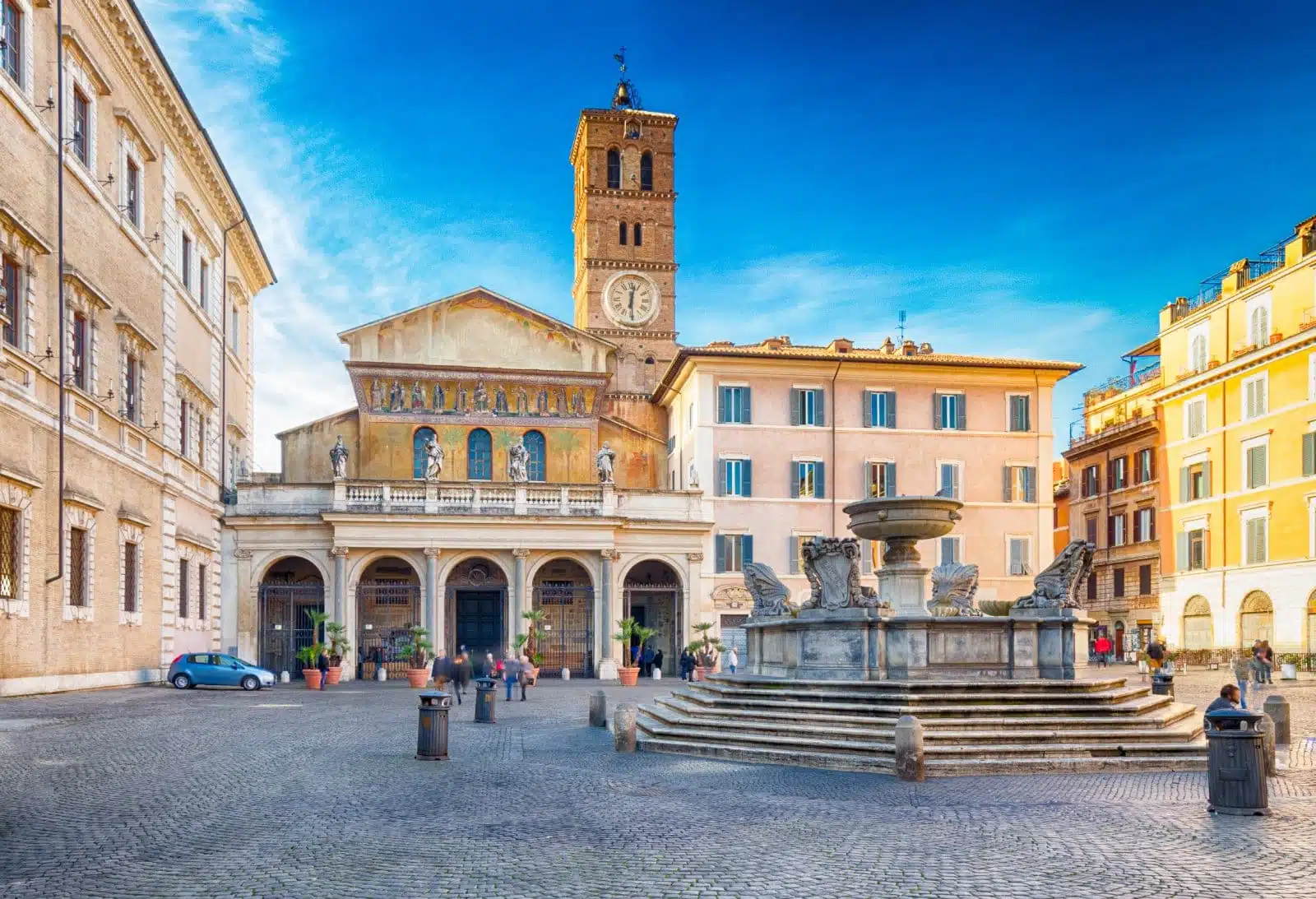
Image Credit: Shutterstock / Vivida Photo PC
Trastevere, known for its narrow cobblestone streets and medieval charm, offers a glimpse into the more traditional side of Rome. This vibrant neighborhood, with its ivy-clad buildings, artisan shops, and trattorias, has a unique character and laid-back atmosphere. Walking through Trastevere, you’ll find hidden piazzas, historic churches, and local markets, each adding to the area’s enchanting appeal. It’s an ideal place to enjoy authentic Roman cuisine and experience the city’s lively nightlife.
Insider’s Tip
Dine at a local trattoria for a traditional Roman meal away from the tourist-heavy areas.
How To Get There
Trastevere is easily accessible by bus or tram, but exploring on foot from the city center offers a more immersive experience.
Best Time To Travel
Evening time is perfect for experiencing Trastevere’s lively atmosphere, while daytime offers a quieter exploration of the neighborhood.
7. Galleria Borghese
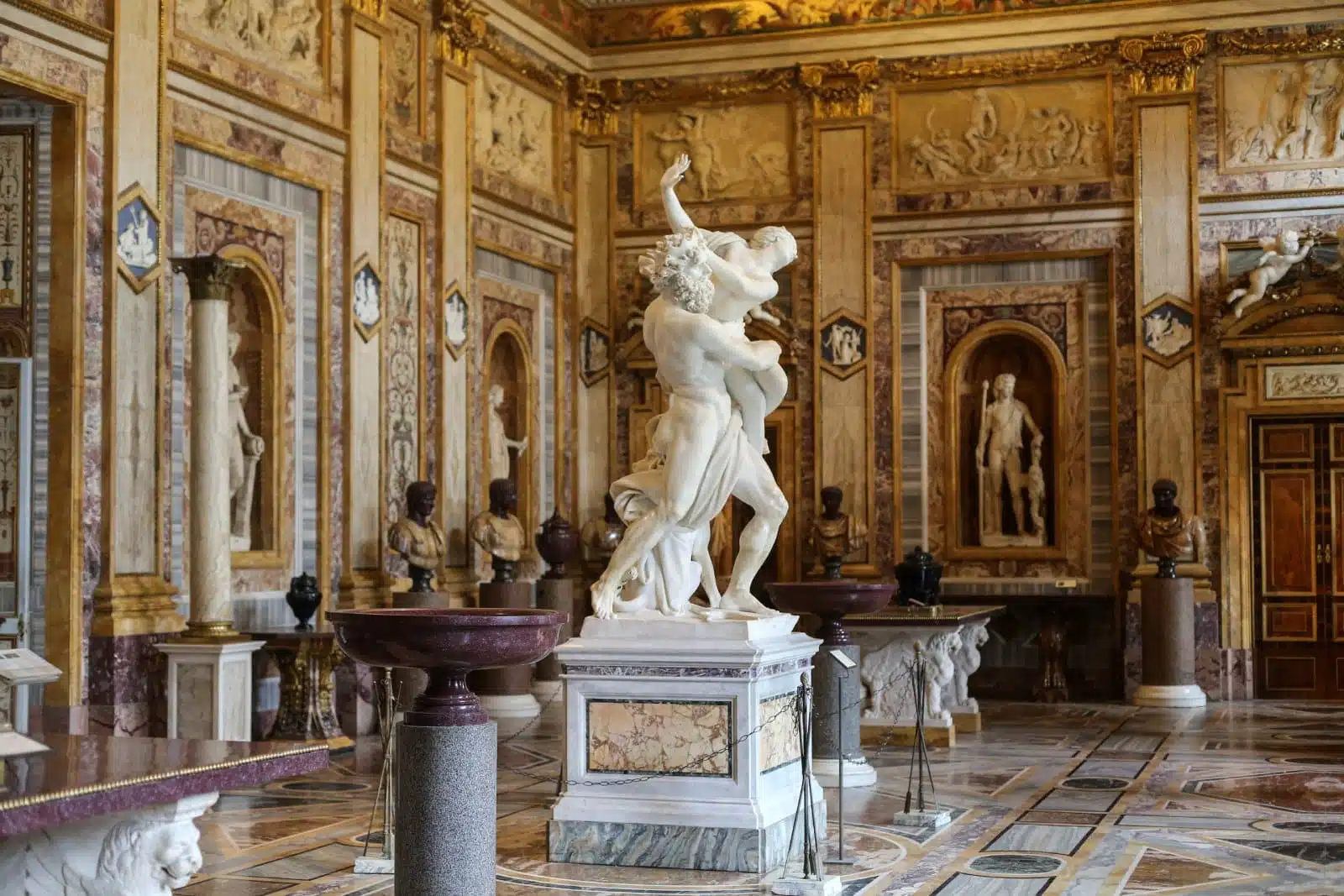
Image Credit: Shutterstock / wjarek
The Galleria Borghese is one of Rome’s most remarkable art galleries, housing a substantial collection of sculptures and paintings. Located in the lush Borghese Park, the gallery includes masterpieces by artists such as Bernini, Caravaggio, and Raphael. The villa is an architectural sensation, and the surrounding gardens provide a peaceful retreat from the city’s hustle and bustle.
Insider’s Tip
Booking tickets in advance is essential, as the gallery limits the number of visitors to preserve the tranquil atmosphere.
How To Get There
The gallery is located in the Borghese Park, reachable by bus or a pleasant walk through the park from the city center.
Best Time To Travel
Weekday visits usually mean fewer visitors, providing a more intimate viewing experience.
8. Campo de’ Fiori Market
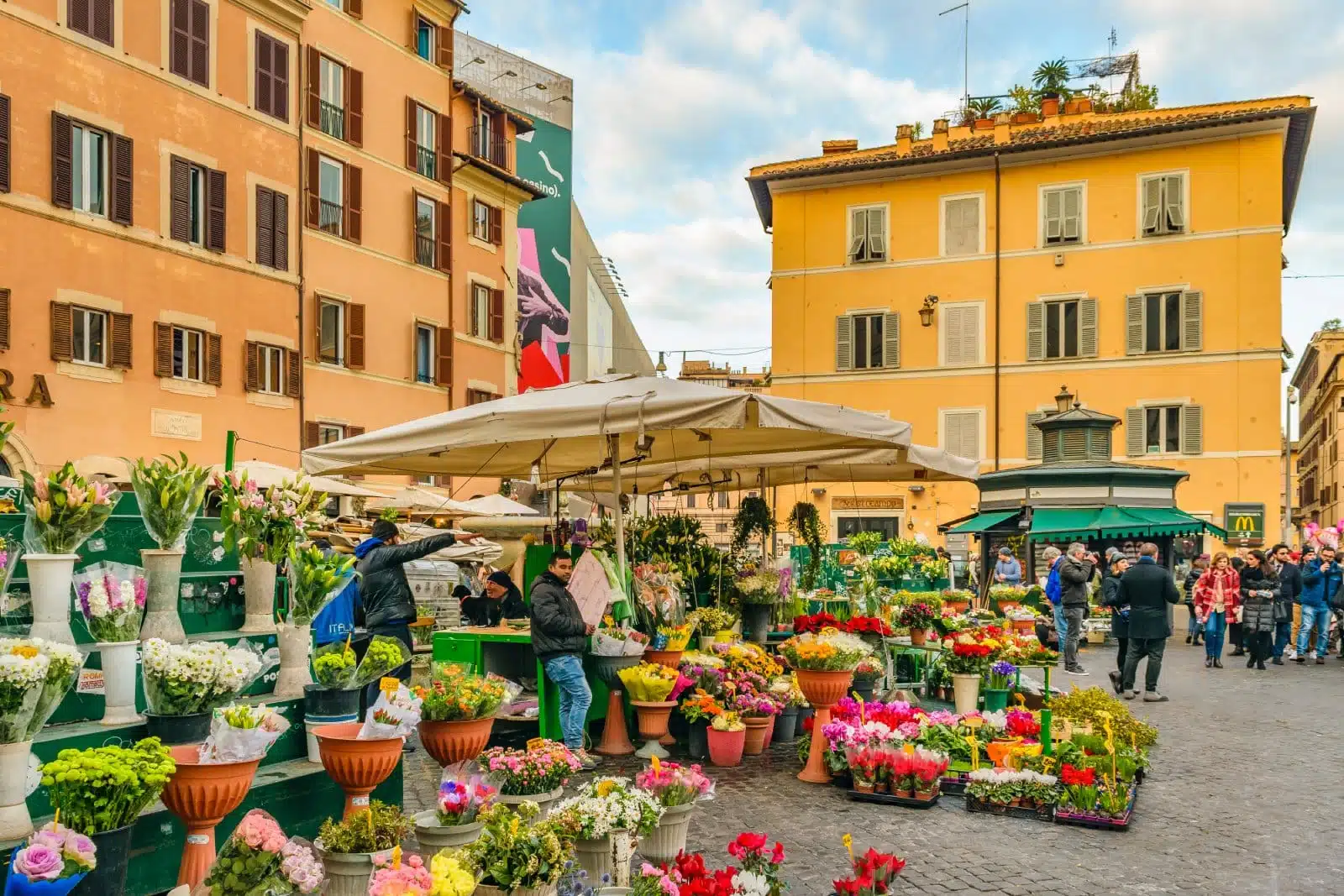
Image Credit: Shutterstock / DFLC Prints
Campo de’ Fiori is a bustling marketplace by day and a lively social square by night. The market offers a range of fresh produce, flowers, spices, and Italian specialties, making it a colorful and sensory experience. Exploring the market, you’ll find everything from local cheeses and cured meats to artisanal pastas and oils. It’s not just a place for shopping; it’s a vibrant part of Roman life where locals and tourists mingle.
Insider’s Tip
Visit early in the morning to see the most lively market and get the best selection of fresh produce.
How To Get There
Campo de’ Fiori is centrally located and within walking distance from many major sites, including Piazza Navona.
Best Time To Travel
The market operates every morning except Sundays.
9. Spanish Steps
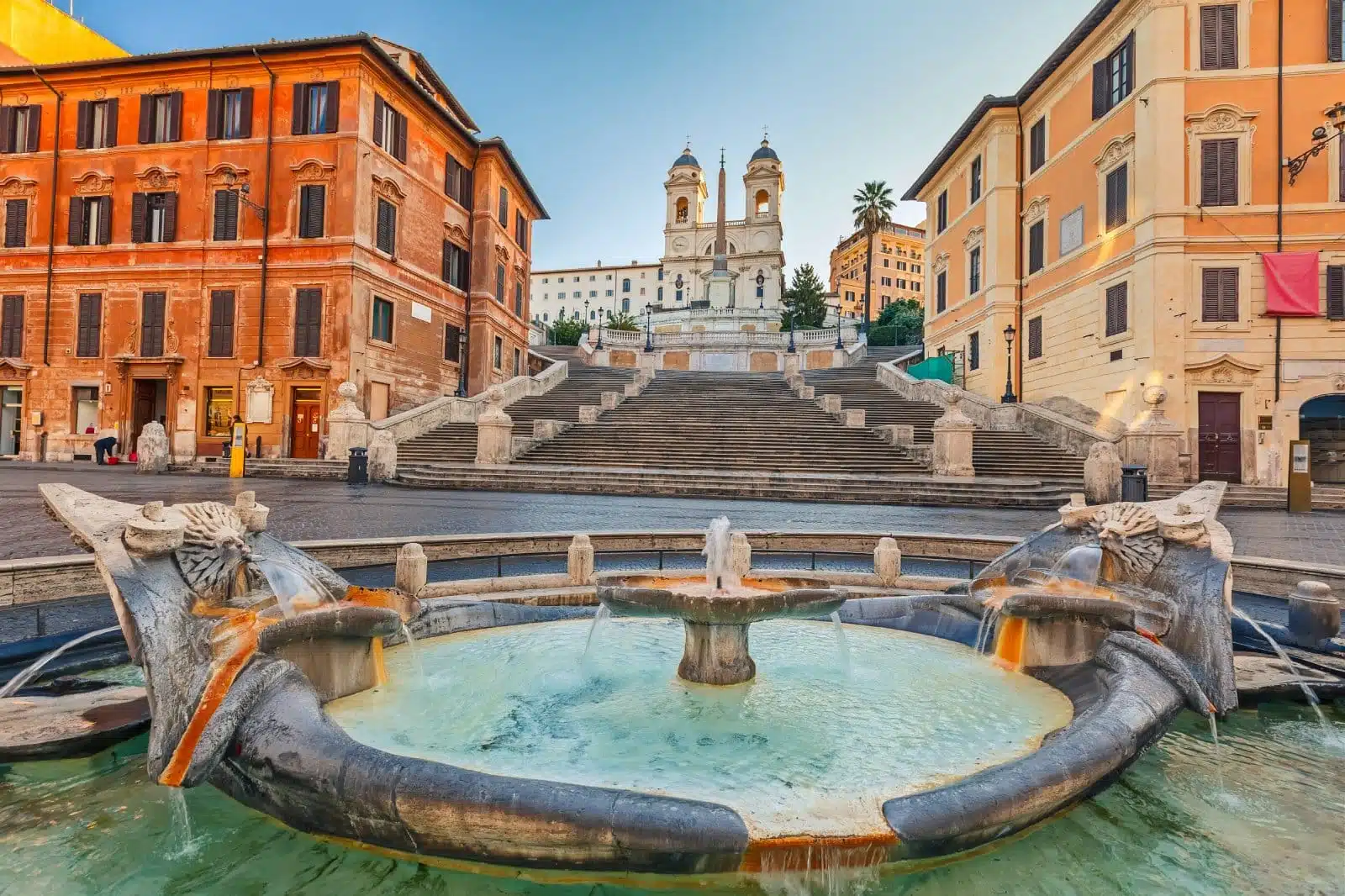
Image Credit: Shutterstock / S.Borisov
The Spanish Steps, an architectural and cultural icon of Rome, connect the Piazza di Spagna at the base with the Piazza Trinità dei Monti at the top. Climbing the steps offers a delightful view of the city’s rooftops. It is a popular spot for locals and tourists to gather. The steps are not just a passageway but a place to pause, enjoy the atmosphere, and people-watch.
Insider’s Tip
Visit during spring when the steps are adorned with beautiful flowers, enhancing their iconic charm.
How To Get There
The Spanish Steps are a short walk from the Spagna metro station, easily accessible from various parts of the city.
Best Time To Travel
Early mornings or late evenings offer a more peaceful experience, as the steps can be crowded during the day.
10. Piazza Navona
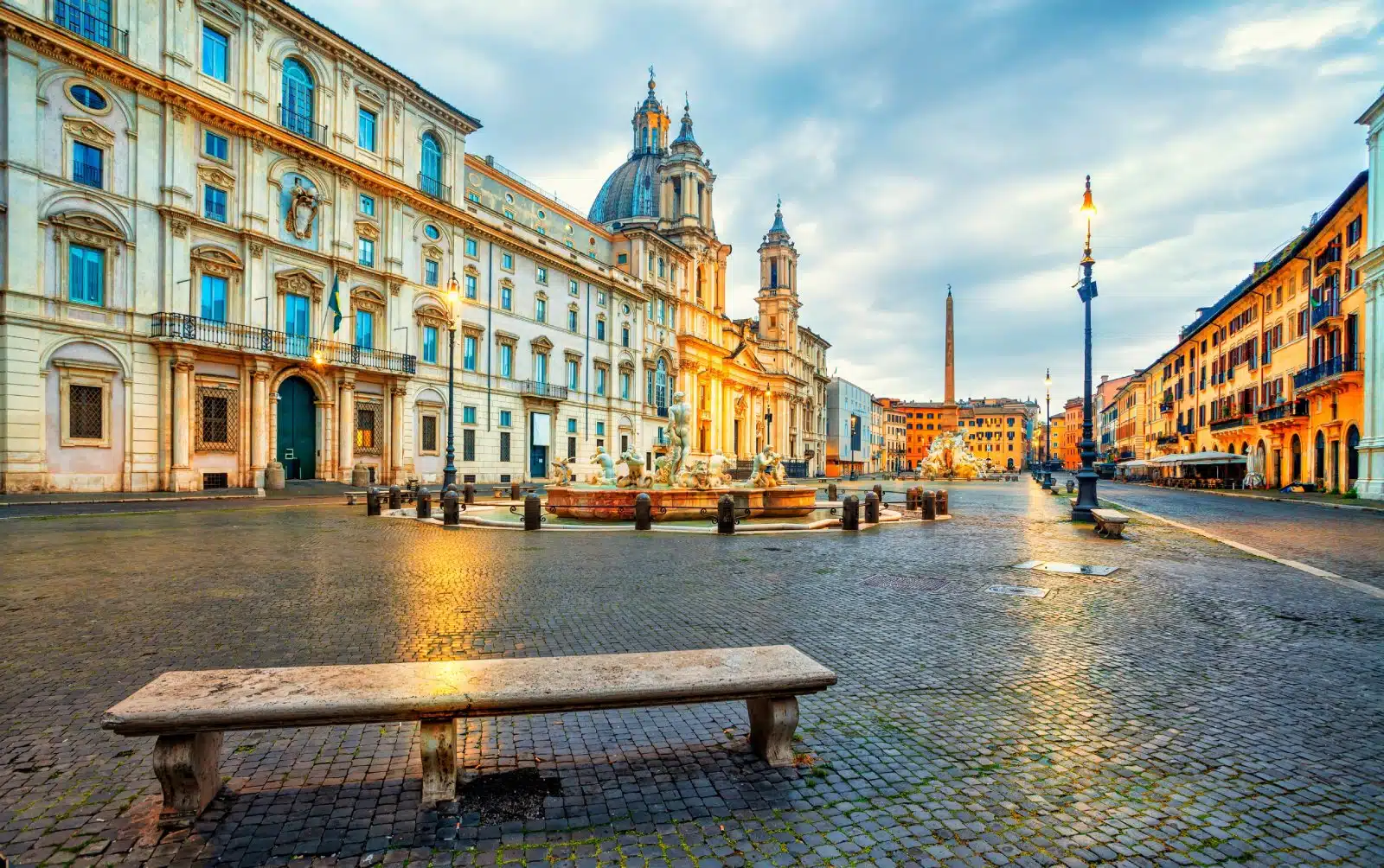
Image Credit: Shutterstock / Vlas Telino studio
With its stunning Baroque architecture, Piazza Navona is one of Rome’s most famous squares. Once a Roman stadium, the piazza is lined with restaurants, gelaterias, and bustling cafes today. Its centerpiece is the Fountain of the Four Rivers, designed by Bernini, representing the world’s major rivers across four continents. The square is a feast for the eyes and a hub of artistic and cultural activity, often hosting street artists, painters, and musicians.
Insider’s Tip
Enjoy a coffee or aperitivo at one of the cafes surrounding the piazza for prime people-watching and a view of the fountains.
How To Get There
Piazza Navona is centrally located and best reached on foot from other nearby attractions in the city center.
Best Time To Travel
Visit in the late afternoon or early evening to enjoy the lively atmosphere and beautiful lighting.
11. The Catacombs
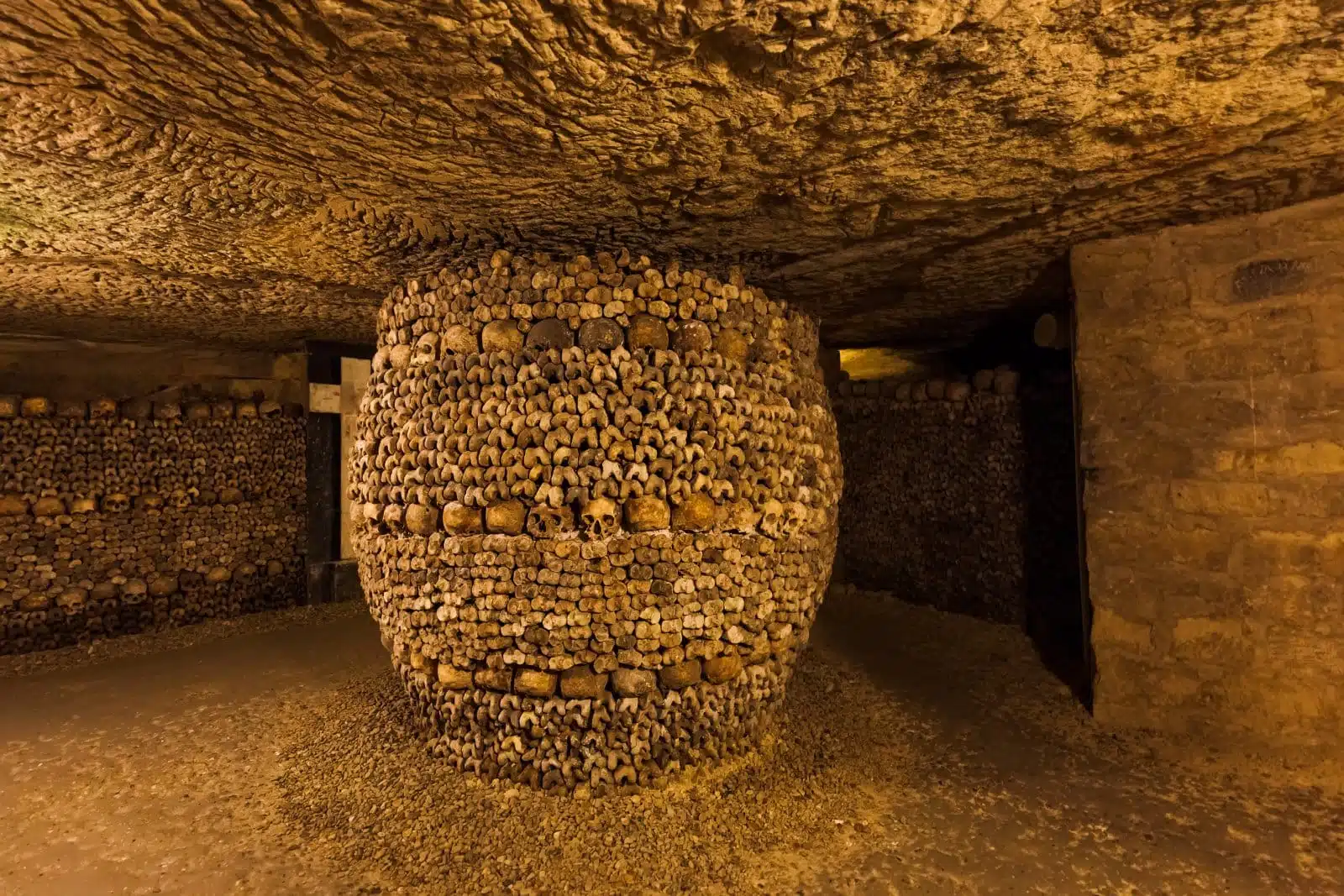
Image Credit: Shutterstock / Tatiana Popova
Rome’s catacombs are ancient underground burial places that offer a unique glimpse into early Christian history and burial practices. The Catacombs of San Callisto and San Sebastiano are among the most visited, featuring miles of underground passageways and tombs. A guided tour of the catacombs provides insight into the fascinating and somewhat eerie world beneath Rome’s streets.
Insider’s Tip
Wear comfortable shoes as the tours involve walking through narrow and sometimes uneven passageways.
How To Get There
The catacombs are located outside the city center, accessible by bus or a combination of metro and bus.
Best Time To Travel
The catacombs maintain a cool temperature year-round, making them a good visit any time, but they are less crowded during the off-peak seasons.
12. Castel Sant’Angelo
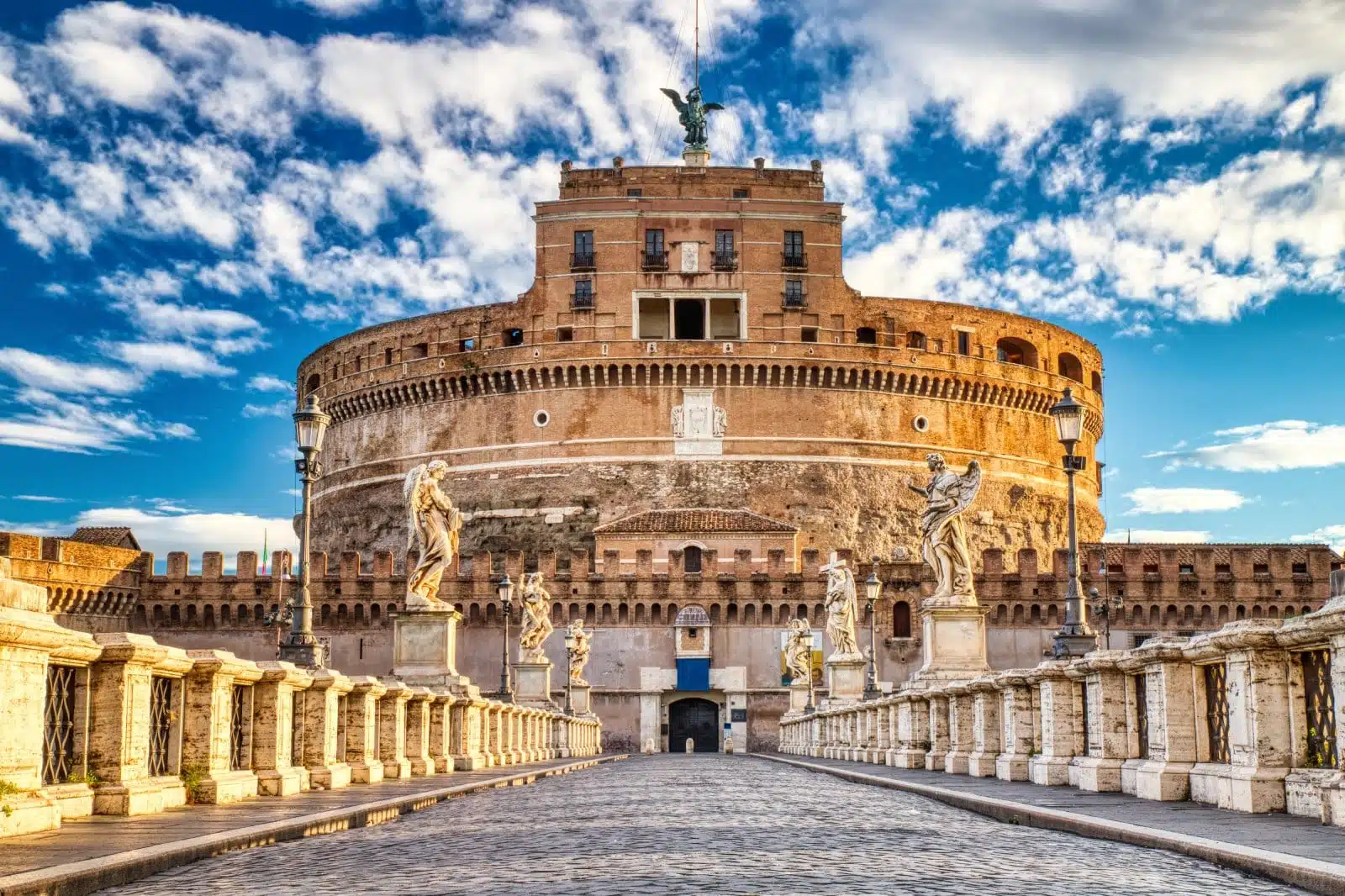
Image Credit: Shutterstock / RomanSlavik.com
Castel Sant’Angelo, initially built as a mausoleum for Emperor Hadrian, has served various roles throughout history, including a fortress, a papal residence, and now a museum. The castle offers a rich history to explore, along with stunning views of the city and the Tiber River from its terrace. The bridge leading to the castle, Ponte Sant’Angelo, is adorned with beautiful angel statues and provides a picturesque approach to the fortress.
Insider’s Tip
Visit in the late afternoon to experience the sunset from the castle’s terrace, offering one of the best views in Rome.
How To Get There
The castle is within walking distance from Vatican City and is easily accessible by foot or public transport.
Best Time To Travel
Early morning or late afternoon visits are recommended to avoid crowds and to enjoy the view in the best light.
The Bottom Line
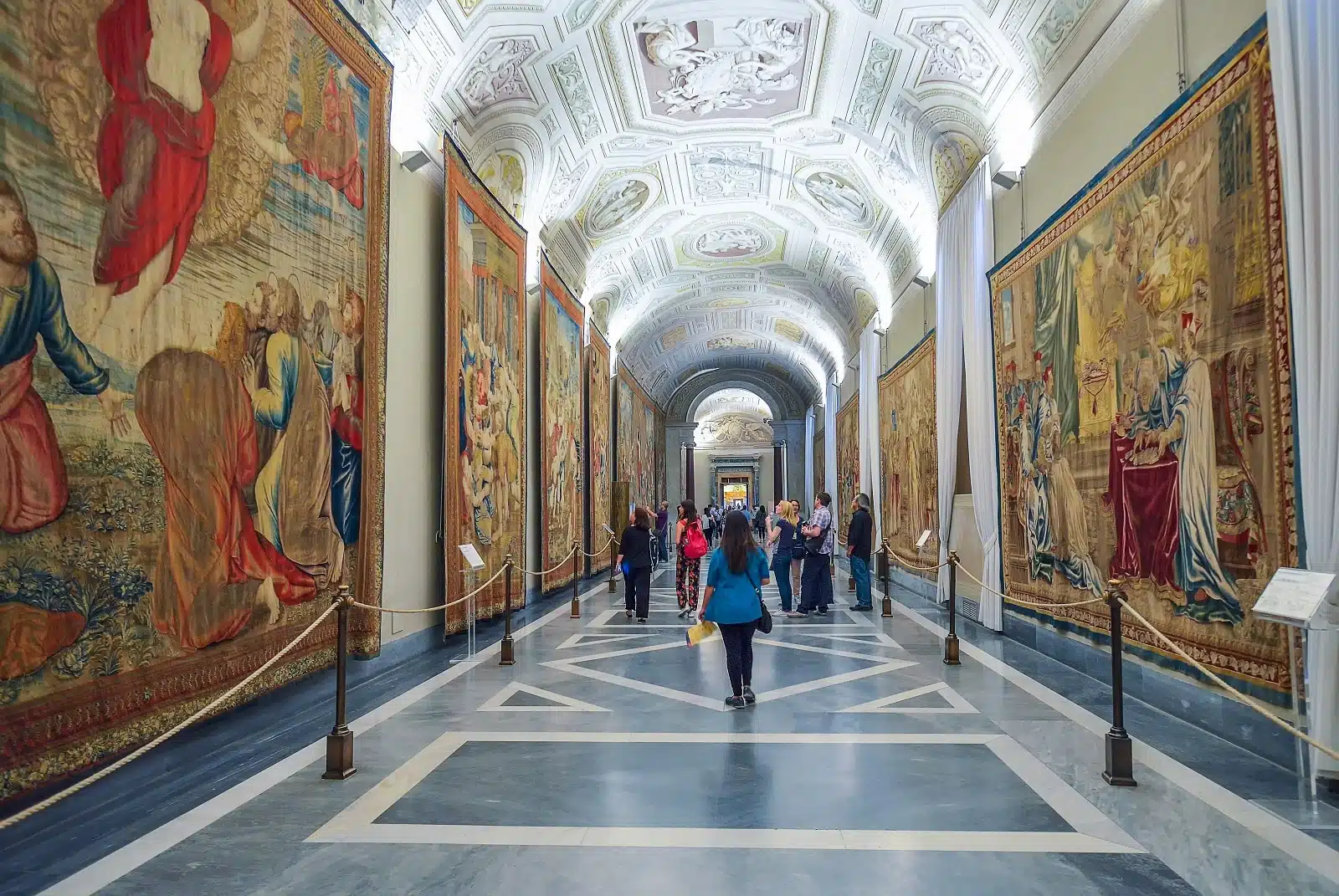
Image Credit: Shutterstock / Cristian Puscasu
Rome is not just a city; it’s a living museum, a testament to the grandeur of human civilization. Each cobblestone street, ancient ruin, and magnificent artwork tells a story of a past era, inviting you to be a part of its ongoing narrative. As you wander through Rome, remember that you’re walking in the footsteps of emperors, artists, poets, and philosophers. Your journey through this eternal city is an exploration into the heart of human history and creativity. Embrace each moment, savor each experience, and let Rome’s timeless beauty inspire and enchant you. Buon viaggio!
More From The Green Voyage
12 Best Practices for Sustainable Travel in 2024 – How to Travel With Minimal Environmental Impact
Unlocking Hotel Perks – A Traveler’s Guide to Maximizing Hotel Reward Programs for Optimal Benefits
Travel Hacks for Frequent Flyers – 6 Tips and Tricks to Make the Best of Air Travel
The post 12-Step City Guide to Rome 2024 first appeared on The Green Voyage.
Featured Image Credit: Shutterstock / S.Borisov.
Tips for Trip Success
Book Your Flight
Find an inexpensive flight by using Kayak, a favorite of ours because it regularly returns less expensive flight options from a variety of airlines.
Book Your Hotel or Special Accommodation
We are big fans of Booking.com. We like their review system and photos. If we want to see more reviews and additional booking options, we go to Expedia.
You Need Travel Insurance!
Good travel insurance means having total peace of mind. Travel insurance protects you when your medical insurance often will not and better than what you get from your credit card. It will provide comprehensive coverage should you need medical treatment or return to the United States, compensation for trip interruption, baggage loss, and other situations.Find the Perfect Insurance Plan for Your Trip
